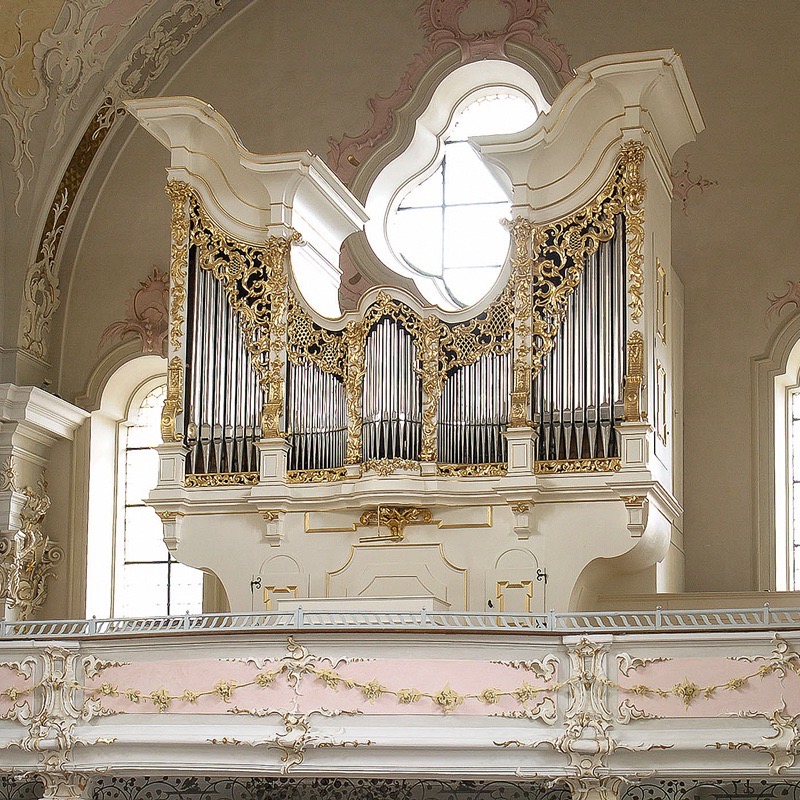REINISCH
Wilten Basilica Innsbruck
Organ details
History
WILTEN BASILICA
Wall fragments of a Roman building provide evidence that the history of this church stretches way back into the 4th century AD. The church is situated on the grounds of the Roman military camp “Veldidena”. According to the legend of its foundation, Roman legionnaires worshipped a painting of the Virgin Mary here under the shade of four trees. From the 12th century onwards, the church was ministered by the religious order of the Premonstratensians. It was not, however, until 1259 that the church’s name –“Unsere Hohe Frau” (Our Beloved Lady) – was first documented. At that time, it was already a place of pilgrimage. Between 1751and 1756 the church was completely rebuilt in accordance with plans drawn up by master builder Franz de Paula Penz in collaboration with the sculptor Josef Stapf.
The Augsburg-based painter Matthäus Günther created the stunning ceiling frescoes which depict scenes from the life of the Virgin Mary in what is undoubtedly the Tyrol’s most beautiful Rococo church. Centrepiece of the parish and pilgrimage church is the miraculous depiction on the high altar, a statue of the Madonna with Child, dating back to the first half of the 14th century. Wilten is Innsbruck’s oldest parish. In 1957 it was granted the title “Basilica minor” by the Pope, a title that emphasises the church’s special significance here in the region.
THE REINISCH ORGAN, 1894
After completion of the church building, the Basilica received, in 1758, an organ built by Anton Fuchs I from Gries am Brenner for which the carpenter Franz Zängl created a case in typical Rococo style that still exists today. In 1894 Franz Reinisch II from Steinach am Brenner installed a new organ into the historical organ case. The organ was refurbished in 2003 in the course of which its original sound of 1894 was restored. The tone of this instrument now reflects the romantic tradition of the era in which it was built and opens up a world of sound that is virtually unknown today.
Multimedia library
Specification
| I. Hauptwerk C–f3 | II. Unterwerk C–f3 | Pedal C–d1 | ||
| Bordun 16 Principal 8 Principal piano 8 Gedeckt 8 Gamba 8 Salicional 8 Oktav 4 Spitzflöte 4 Cornet V 2 2/3 Mixtur V 2 Trompete 8 | Geigenprincipal 8 Gedeckt 8 Dolce 8 Aeoline 8 Rohrflöte 4 Fugara 4 | Subbaß 16 Flötenbaß 16 Violon 16 Oktavbaß 8 Cello 8 Posaune 16 | Koppeln II/I I/Ped II/Ped Kegelwindladen Barkerhebel für Manual I Feste Kombinationen: ff, f, mf, Auslöser Leicht ungleichschwebende Temperatur Stimmtonhöhe: a1= 442 Hz bei 18 °C |

